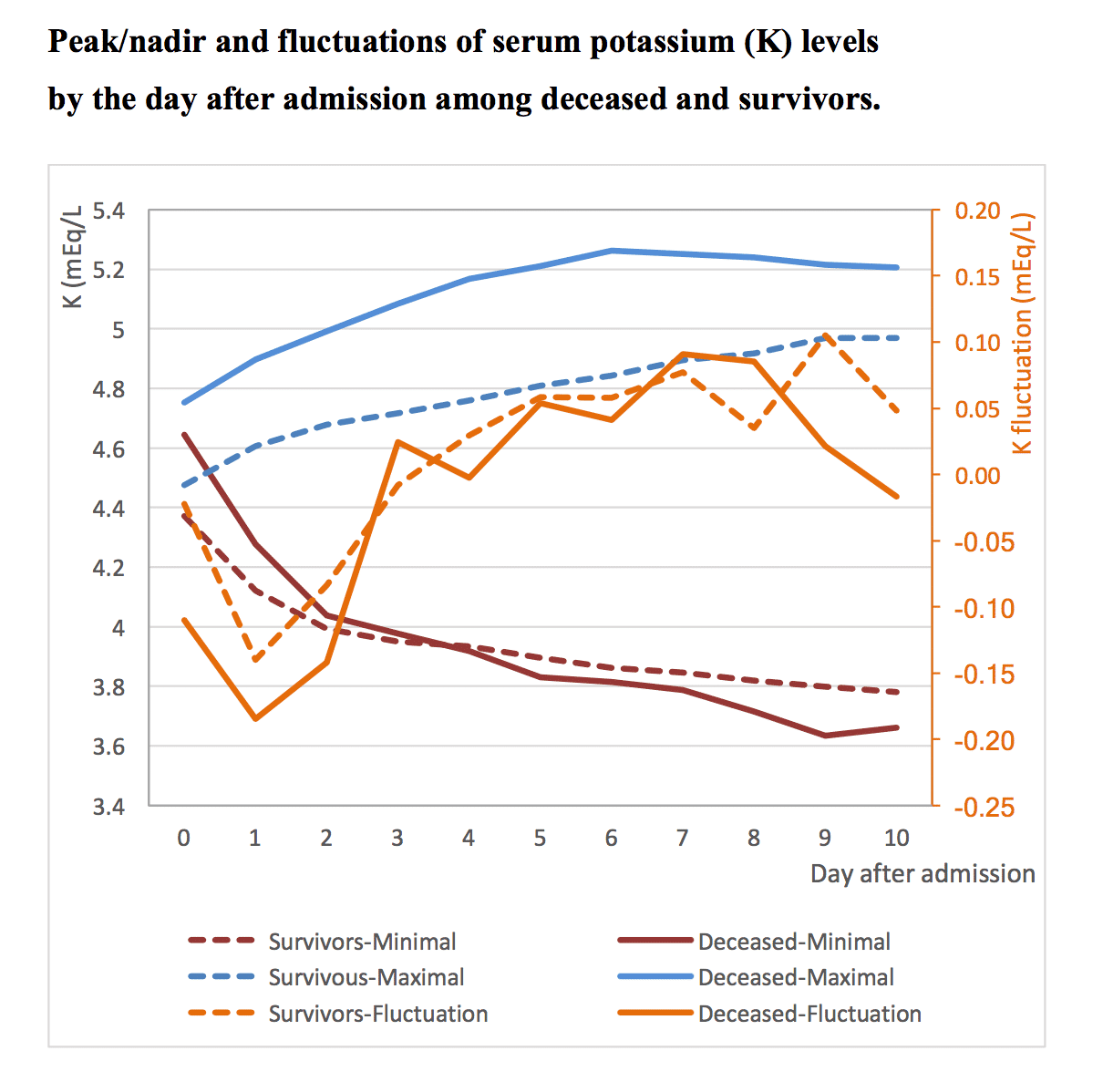
Changes in Serum Potassium Levels are Associated with In-Hospital Mortality of Acute Myocardial Infarction Patients
2Internal Medicine E, Rabin Medical Center, Beilinson Hospital
Background: serum potassium levels (KL, mEq/L) are associated with outcomes in acute myocardial infarction (AMI). Little is known about prognostic significance of KL changes during AMI hospitalization.
Aim: to evaluate the associations between changes in KL and in-hospital mortality of AMI patients.
Methods: retrospective analysis of AMI patients in a tertiary hospital. Exclusion criteria: chronic dialysis, mechanical ventilation and emergency coronary-artery bypass-graft. KLs during hospitalization, minimal, maximal, and fluctuation (delta between two consecutive KL) were recorded. Primary outcome: in-hospital all-cause mortality.
Results: 13,684 admissions (10,032 patients) were included (age 68.1±14.3 years, 65.4% males, 44.2% STEMI). In-hospital mortality was 3.7%. Mean KL were higher among deceased, than survivors (4.40±0.81 vs. 4.32±0.56, P<0.001). KL in the extreme categories (0.1 mEq/L were more common among deceased than survivors (P
Conclusions: Fluctuations in KL, peak and nadir KL, and the timing of the latter in AMI patients are independent prognostic markers of in-hospital mortality. Close monitoring of KL and changes are warranted.


Powered by Eventact EMS